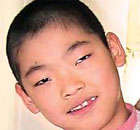Society
Luxury school for rural children in Hunan
By Cheng Anqi (chinadaily.com.cn)
Updated: 2010-04-07 19:59
 |
Large Medium Small |
A newly built school in Wulinyuan district of Zhangjiajie, in central China's Hunan province, has become a scenic spot drawing tourists. They visit the school to figure out what a 40 million-yuan school looks like.
Occupying more than 120 mu (7.9 hectares), No.2 Wulinyuan Middle school is adjacent to the pleasant Zhangjiajie national forest park and surrounded by fields, giving it a quaint and magnificent look.
It is composed of a kindergarten, a primary school and a middle school, with facilities for teaching buildings, students' dorm buildings, and a playground with rubber tracks, a basketball court and a football field.
More than 1,600 village children began their first semester in early 2010.
With the distinct 'diaojiao' building style of the Tujia ethnic group, the school costs a whopping 40 million yuan ($6 million), almost 195 times more than the normal amount of investment a typical primary school would cost.
As the school draws increasing attention, it has caused a stir online.
Some netizens say that it will be a great joy to study in such a well-equipped school with beautiful surroundings. It is much better than piling up a luxury office building.
Some doubt the motivation for establishing the school, accusing it of being a sort of public squander in the guise of a charitable contribution.
According to the school principal Liu Antian, the school was built in 2006 specially for children living in two inaccessible villages of the district, Zhonghu and Tianzi, 45 km away from the urban area.
"Children in the villages rarely had access to receive higher education that seems much easier for urban citizens, so the local government voted to support us," says Liu, who believes it was a worthwhile project – to refurbish three risky school buildings into one purpose-built complex. "Poor location will never be a problem for children here; now they have the fast track to finish the nine-year compulsory education."







